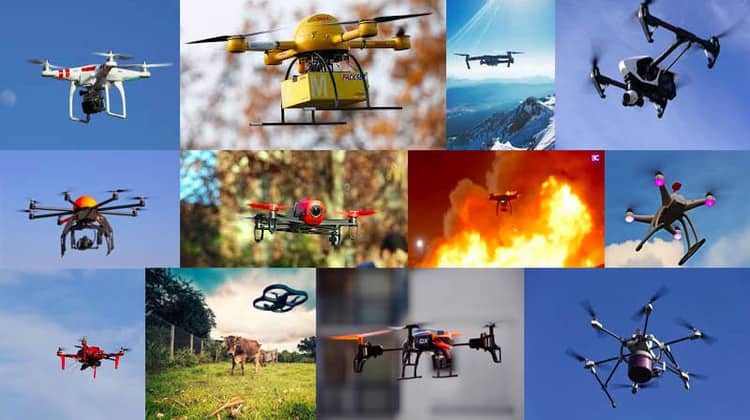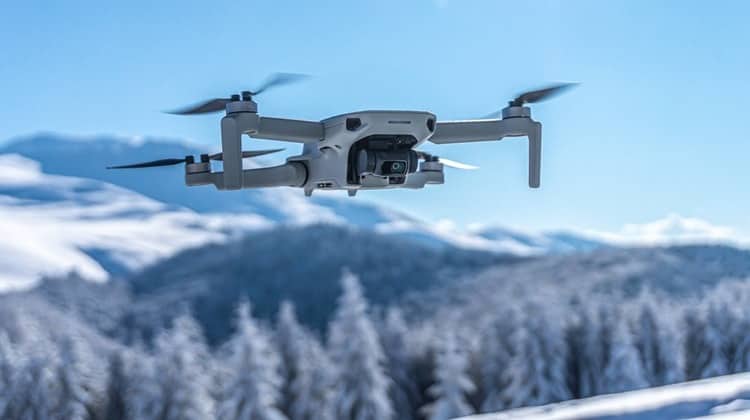Different Types Of UAV Drones 2024
In recent years, the landscape of drone technology has witnessed unprecedented growth and innovation, rendering drones increasingly accessible and versatile across various sectors. This surge in drone availability offers enthusiasts and professionals alike a plethora of options tailored to their specific needs. However, with the myriad of choices comes the necessity for a deeper understanding of the diverse types of drones and their respective applications. In this comprehensive guide, we embark on a journey to unravel the intricacies of drone classifications and their multifaceted uses.
What Is Drones?
At its core, a drone, formally termed an unmanned aerial vehicle (UAV), represents a flying apparatus devoid of human pilots, controlled either through pre-programmed software or remote operation. While the nomenclature varies, encompassing terms such as Remotely Piloted Aircraft (RPA), UAV (Unmanned Aerial Vehicle), or simply “drone,” the essence remains consistent – autonomous flight.

Categorizing Drones:
Drones exhibit remarkable diversity in their design, functionality, and size, facilitating a spectrum of applications ranging from recreational pursuits to professional endeavors. To demystify this diversity, we categorize drones based on distinct parameters.
Types of Drones According to Wing Configuration:
Multi-rotor Drones: Embodying versatility and agility, multi-rotor drones, also known as rotary-wing drones, stand as the cornerstone of both recreational and professional drone applications. Their compact stature and precise maneuverability render them ideal for tasks such as aerial photography and surveillance. However, their limited flight autonomy and heightened energy consumption necessitate strategic battery management.
Fixed-wing Drones: Contrasting with their rotary-wing counterparts, fixed-wing drones harness aerodynamic principles to maintain flight, making them indispensable for mapping vast terrains and conducting prolonged aerial surveys. While offering extended endurance, these drones demand ample space for takeoff and landing, often accompanied by specialized ground equipment.
Single-rotor Helicopter Drones: Characterized by robustness and payload capacity, single-rotor drones emulate the design of conventional helicopters, boasting superior efficiency and endurance. Despite their prowess, their intricate mechanics and elevated cost deter casual users, relegating them to specialized applications such as industrial inspections and cargo transport.
Fixed-wing Hybrid VTOL Drones: Representing the pinnacle of drone innovation, fixed-wing hybrid Vertical Takeoff and Landing (VTOL) drones merge the endurance of fixed-wing aircraft with the vertical maneuverability of rotary-wing devices. These drones, tailored for expansive operations like mapping and surveillance, mitigate the spatial constraints associated with traditional fixed-wing UAVs, albeit at a premium price point.

Types of Drones According to Size:
Nano Drones: Diminutive in scale yet formidable in capability, nano drones epitomize stealth and agility, facilitating clandestine surveillance and reconnaissance missions. With dimensions akin to insects, these drones navigate confined spaces with ease, catering primarily to covert operations.
Small Drones: Slightly larger in scale, small drones strike a balance between portability and functionality, finding utility in recreational endeavors and aerial photography. Their compact design and ease of operation make them suitable for both indoor inspections and outdoor leisure activities.
Medium Drones: Exceeding the dimensions of their smaller counterparts, medium drones emerge as stalwarts of professional applications, boasting enhanced payload capacity and endurance. Ideal for amateur photography and commercial ventures, these drones cater to a broad spectrum of users.
Large Drones: Commanding the skies with their imposing presence, large drones mirror the scale of conventional aircraft, serving as indispensable assets in military surveillance and strategic operations. Equipped with cutting-edge technology, these drones transcend traditional boundaries, finding applications in both defense and civilian domains.

Conclusion:
In essence, the world of drones unfolds as a tapestry of innovation and possibility, offering enthusiasts and professionals an array of options tailored to their unique requirements. Whether soaring through the skies on reconnaissance missions or capturing breathtaking aerial vistas, drones stand as testaments to human ingenuity, reshaping our perception of flight and exploration in the digital age.

